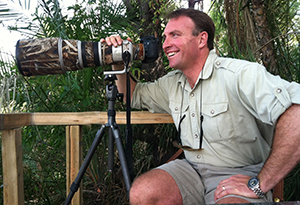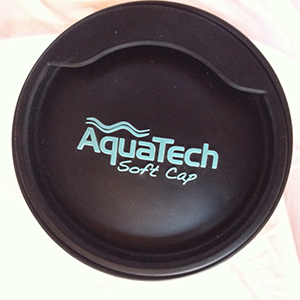Big Lenses on Safari
For the vast majority of travelers, a 100-400mm (or 80-400mm for Nikon) f/4.5-5.6 is the largest lens that we would recommend for safari. Advanced photographers who already have bigger lenses might think about taking them, but there are some important considerations:
Which Super-Telephoto?
 Canon's new 200-400mm f/4 lens (with built-in 1.4x extender) is widely regarded as the (current) champion of safari lenses; followed closely by Nikon's 200-400mm f/4 lens. When it comes to prime lenses, many season professionals favor the 500mm f/4 lens by either Canon or Nikon, and Pierre has successfully used his "Trusty-500" on many a safari. The next most common candidate would be the super-fast 300mm (or 400mm) f/2.8. Outside of bird photography, the 600mm f/4 has a fairly limited following, and we've yet to encounter any of the 800mm f/5.6 behemoths on safari.
Canon's new 200-400mm f/4 lens (with built-in 1.4x extender) is widely regarded as the (current) champion of safari lenses; followed closely by Nikon's 200-400mm f/4 lens. When it comes to prime lenses, many season professionals favor the 500mm f/4 lens by either Canon or Nikon, and Pierre has successfully used his "Trusty-500" on many a safari. The next most common candidate would be the super-fast 300mm (or 400mm) f/2.8. Outside of bird photography, the 600mm f/4 has a fairly limited following, and we've yet to encounter any of the 800mm f/5.6 behemoths on safari.
Restrictions
Super-telephotos are big and heavy, creating major transportation headaches.
NEVER check any valuable item (including photographic equipment) on scheduled flights. For most airlines, carry-on bags in coach class are restricted to around 46 total inches (length + breadth + depth), with a maximum weight allowance of 18lbs. Business class allows two such bags.
Most charter flights around Africa permit a total luggage weight of 44lbs per person, including camera equipment and carry-on, packed in soft sided bags without wheels. Some charter companies in South Africa give an additional 10lbs per person allowance, but this is the exception.
The Solution
Travel business class and buy an extra seat on all charter flights. If this is not feasible, you can try some of Pierre's strategies for getting by on a budget:
 Backpack camera bag. The Lowepro Vertex 300AW is about perfect:, being a robust bag of 45 total inches that squeezes into every overhead luggage compartment on scheduled carriers in southern Africa; it packs a lot of equipment, is easy to carry, and has a built-in cover to protect against dust and rain. Attach lens hoods to the outside via a bungee cord.
Backpack camera bag. The Lowepro Vertex 300AW is about perfect:, being a robust bag of 45 total inches that squeezes into every overhead luggage compartment on scheduled carriers in southern Africa; it packs a lot of equipment, is easy to carry, and has a built-in cover to protect against dust and rain. Attach lens hoods to the outside via a bungee cord.- Pack light. My full camera bag weighs just under 30lbs, leaving just 15lbs for clothing. This is enough because safari is very casual and the camps do laundry, but it takes some thought and discipline.
- Smile and be courteous. Remember that you are actually only allowed 18lbs of carry-on luggage for scheduled flights, and your camera bag will almost certainly exceed this - make it look as light and low impact as possible, to avoid getting weighed.
- Board scheduled flights early. Airlines in Southern Africa don't board by rows, passengers queue at the gate to board the plane, and you would do well to jump in line early so that there is space for your camera bag in the overhead lockers - if your bag is stowed and the door can close, you're not going to have trouble from cabin crew.
Accessories
 An Aquatech Softcap is a convenient lens cap alternative to the impractical leather "snoot" caps that the big lenses come with.
An Aquatech Softcap is a convenient lens cap alternative to the impractical leather "snoot" caps that the big lenses come with.
A neoprene lens coat offers a waterproof covering to protect against bumps, jars, and nicks, and provides a thermal barrier to protect hands from cold lenses on frosty safari mornings.
Camera support is very much a question of personal preference, and will continue to be debated in the southern African safari context. Pierre prefers the speed and range of motion offered by handholding (see previous article), but monpods, clamps, and beanbags can be helpful in lowlight conditions.
If it all sounds like too much hassle and risk, you're probably right. But owners of these big lenses can be quite passionate about using them, and the results can be very impressive - just be sure that you consider all the challenges before packing your big glass.
